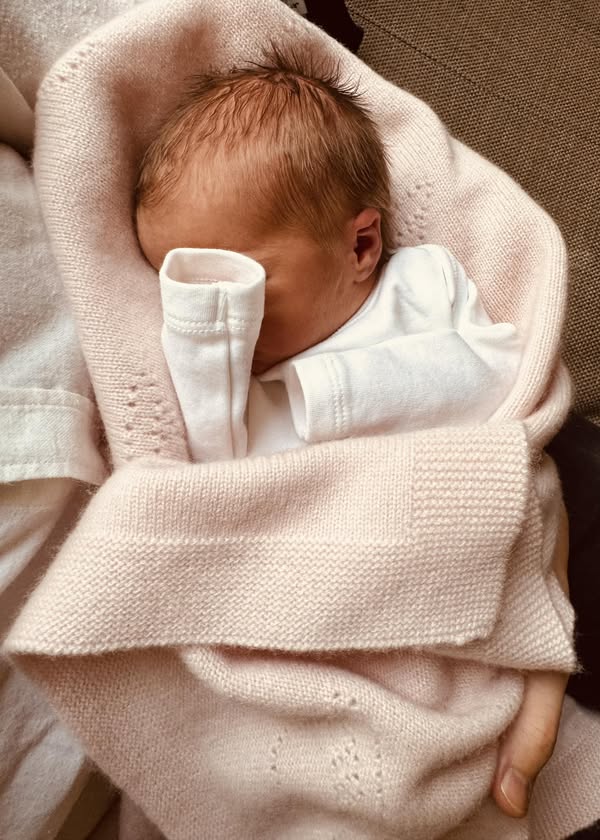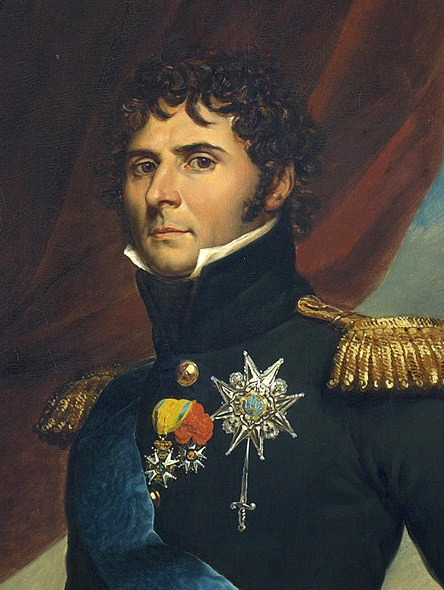© Unofficial Royalty 2025

Frederik Hendrik, Prince of Orange; Credit – Wikipedia
January 29, 1584 – Birth of Frederik Hendrik, Prince of Orange in Delft, Holland, Dutch Republic, now in the Netherlands
Frederik Hendrik was the only child of Willem I (the Silent), Prince of Orange and his fourth wife, French Huguenot Louise de Coligny. Louise’s father, Gaspard II de Coligny, was a French nobleman and admiral but is best remembered as a leader of the Huguenots (French Calvinist Protestants). He was killed during the St. Bartholomew’s Day Massacre in 1572 when thousands of Huguenots were murdered. In 1625, Frederik Hendrik became Prince of Orange upon the death of his elder half-brother Maurits, Prince of Orange. That same year Frederik Hendrik married Princess Amalia of Solms-Braunfels. They had nine children including Willem II, Prince of Orange who married Mary, Princess Royal, eldest daughter of King Charles I of England. Their one child was Willem III, Prince of Orange, later King William III of England. Frederik Hendrik ruled the Dutch Republic for 22 years. His reign is included in the era known as the Dutch Golden Age in which Dutch trade, science, military, and art were among the most acclaimed in the world.
Unofficial Royalty: Frederik Hendrik, Prince of Orange
January 29, 1601 – Death of Louise de Lorraine-Vaudémont, Queen of France, wife of King Henri III of France, at the Château de Moulins in the Auvergne-Rhône-Alpes region of France, first buried at the Convent of Capuchins in Paris, in 1805, her remains were reburied at the Basilica of Saint-Denis near Paris, France
In 1575, Louise married King Henri III of France. Shortly after her marriage, Louise suffered a miscarriage with complications and she never had children. However, Louise and Henri did not give up on having children. They went on many pilgrimages and took thermal cures hoping to have an heir. Despite Henri’s affairs, Louise and Henri both loved each other and Louise did an admirable job with her duties as Queen of France. Their marriage lasted fourteen years until King Henri III was assassinated. After the assassination of Henri III in 1589, Louise became permanently depressed, always dressed in white, the traditional mourning color of French queens, and was nicknamed the “White Queen.” On January 29, 1601, Louise died at the age of 47.
Unofficial Royalty: Louise de Lorraine-Vaudémont, Queen of France
January 29, 1749 – Birth of King Christian VII of Denmark and Norway at Christiansborg Palace in Copenhagen, Denmark
Christian VII was the only surviving son of King Frederik V of Denmark and Norway and his first wife Princess Louisa of Great Britain, and a grandson of King George II of Great Britain. In 1766, Christian succeeded to the Danish and Norwegian thrones after the early death of his father at age 42. That same year he married his first cousin Princess Caroline Matilda of Wales, daughter of Christian’s deceased maternal uncle Frederick, Prince of Wales. The couple had two children, but probably Christian was not Louise Auguste’s father. Because of Carolina Matilda’s affair with Christian’s physician Johann Friedrich Struensee, Struensee was beheaded, and 20-year-old Caroline Matilda lost her title of Queen and was forcibly separated from her children whom she never saw again. She was sent to Celle in her brother’s Kingdom of Hanover and lived the rest of her life at Celle Castle. Christian VII’s reign was marked by mental illness and for most of his reign, he was only nominally king. His half-brother Hereditary Prince Frederik was regent of Denmark from 1772-1784. From 1784 until Christian VII’s death, Christian’s son, later Frederik VI, acted as regent. On March 13, 1808, King Christian VII died from a stroke at the age of 59.
Unofficial Royalty: King Christian VII of Denmark
January 29, 1794 – Birth of George FitzClarence, 1st Earl of Munster, illegitimate son of King William IV of the United Kingdom and his mistress Dorothea Jordan, on Somerset Street, Portman Square in London, England
George was the first of ten children of King William IV of the United Kingdom and his mistress Dorothea Jordan. In 1819. George married Mary Wyndham, the daughter of George Wyndham, 3rd Earl of Egremont and his mistress Elizabeth Fox. The couple had seven children. George served as an army officer during the Peninsular War (1807–1814) and then served in India. He attained the rank of Major-General in the British Army. His father was proud of George’s military record but was very concerned with his drinking and gambling, issues which also affected some of William’s brothers. On March 20, 1842, at his home in Belgravia, London, 48-year-old George FitzClarence, 1st Earl of Munster killed himself with a pistol given to him by his uncle King George IV when he was Prince of Wales. His suicide came as no surprise to his family, who had long been concerned about his mental condition.
Unofficial Royalty: George FitzClarence, 1st Earl of Munster
January 29, 1817 – Death of Heinrich XIII, 2nd Prince Reuss of Greiz in Greiz, Principality of Reuss-Greiz, now in Thuringia, Germany; buried at the Stadtkirche St. Marien, now in Greiz, Thuringia, Germany
Heinrich was the son of Heinrich XI, 1st Prince Reuss of Greiz and his first wife Countess Conradine Reuss of Köstritz. In 1786, he married Princess Wilhelmine Luise of Nassau-Weilburg and the couple had three sons. When his father died in 1800, Heinrich XIII succeeded as 2nd Prince Reuss of Greiz. In 1802, a large fire destroyed much of Greiz, the capital of the Principality of Reuss-Greiz. Approximately 430 buildings were destroyed. Many other buildings were demolished to prevent the fire from spreading. Heinrich XIII oversaw the rebuilding of Greiz in the neoclassical style. Heinrich XIII, 2nd Prince Reuss of Greiz died on January 29, 1817, aged 69.
Unofficial Royalty: Heinrich XIII, 2nd Prince Reuss of Greiz
January 29, 1820 – Death of King George III of the United Kingdom at Windsor Castle in Windsor, England; buried at St. George’s Chapel at Windsor Castle in Windsor, England
King George III is the longest-reigning British king, having reigned for 59 years, 96 days. His length of reign is surpassed only by two queens, both his descendants, his granddaughter Queen Victoria and his great-great-great-great-granddaughter Queen Elizabeth II. George established himself as one of the more popular Hanoverian kings. He was admired for his respectable private life and gained sympathy for his illness. He inherited the family’s love of music and was a patron of the arts and sciences. George was very interested in agriculture and his creation of model farms at Windsor earned him the nickname “Farmer George” which he adored. The only disruption in his family’s domestic lives was George’s attacks of illness. There has been speculation that King George suffered from porphyria. George became so ill that Parliament needed to pass the Regency Act of 1811. The Prince of Wales, the future King George IV, acted as Regent until his father died in 1820.
Unofficial Royalty: King George III of the United Kingdom
January 29, 1844 – Death of Ernst I, Duke of Saxe-Coburg and Gotha at Schloss Friedenstein in Gotha, Duchy of Saxe-Coburg and Gotha, now in Thuringia, Germany; initially buried in the crypt of the Church of St. Moritz in Coburg, Duchy of Saxe-Coburg and Gotha, now in Bavaria, Germany; in 1860, his remains were re-interred in the Ducal Mausoleum in Glockenberg Cemetery in Coburg
In 1806, Ernst succeeded his father Franz Friedrich Anton as Duke of Saxe-Coburg-Saalfeld. Ernst was long content with bachelorhood until his mother insisted he marry to provide the duchy with heirs. In 1817, Ernst married Princess Louise of Saxe-Gotha-Altenburg. The couple had two sons including Prince Albert, the husband of Queen Victoria. Ernst and Louise soon grew apart due to Ernst’s infidelities. After discovering Louise’s affair with her chamberlain in 1824, Ernst forced Louise out of the duchy. She was exiled and permanently cut off from her children. The couple was officially divorced in 1826 and Louise died of cancer in 1831. In 1825, while Ernst and Louise’s divorce proceedings were occurring, Friedrich IV, Duke of Saxe-Gotha-Altenburg, Louise’s uncle, died without an heir. This necessitated a rearrangement of the Ernestine duchies. Ernst received Gotha and ceded Saalfeld to Saxe-Meiningen. He subsequently became Ernst I, Duke of Saxe-Coburg and Gotha. In 1832, Ernst married his niece Marie of Württemberg, the daughter of his sister Antoinette. The couple had no children and had little in common, but Marie had a loving relationship with her stepsons who were also her first cousins. Ernst died on January 29, 1844, at the age of 60.
Unofficial Royalty: Ernst I, Duke of Saxe-Coburg and Gotha
January 29, 1850 – Birth of Marie of Schwarzburg-Rudolstadt, Grand Duchess of Mecklenburg-Schwerin, 3rd wife of Friedrich Franz II, Grand Duke of Mecklenburg-Schwerin, in Raben Steinfeld, Grand Duchy of Mecklenburg-Schwerin, now in Mecklenburg-Vorpommern, Germany
Full name: Marie Karoline Auguste
In 1868, Marie married the widowed Grand Duke Friedrich Franz II of Mecklenburg-Schwerin as his third wife. She was just 18 years old while Friedrich Franz was 45. They had four children together. Through their son Heinrich, who married Queen Wilhelmina of the Netherlands, Marie and her husband are ancestors of the Dutch royal family.
Unofficial Royalty: Marie of Schwarzburg-Rudolstadt, Grand Duchess of Mecklenburg-Schwerin
January 29, 1860 – Death of Stéphanie de Beauharnais, Grand Duchess of Baden, wife of Karl, Grand Duke of Baden, in Nice, France; buried St. Michael’s Church in Pforzheim, Grand Duchy of Baden, now in Baden-Württemberg, Germany
Stéphanie was from the same family as the first husband of Napoleon’s wife Josephine, Alexandre, Vicomte de Beauharnais. Alexandre had been guillotined during the French Revolution. After the death of Stéphanie’s mother, Napoléon brought her to Paris and placed her under the care of his wife Joséphine. After becoming Emperor in 1804, Napoléon sought to strengthen alliances with several European dynasties by arranging several marriages of his extended family. One of these marriages was between Stéphanie and the future Karl I, Grand Duke of Baden in 1806. Before the marriage, Napoléon adopted Stéphanie and elevated her to an Imperial Highness and French Princess. Through her children’s marriages, Stéphanie’s descendants include the former Kings of Romania and Yugoslavia and the royal families of Belgium, Luxembourg, and Monaco. Stéphanie survived her husband by more than 41 years, dying at the age of 71.
Unofficial Royalty: Stéphanie de Beauharnais, Grand Duchess of Baden
January 29, 1870 – Death of Leopoldo II, Grand Duke of Tuscany in Rome, Papal States, now in Italy; buried at the Imperial Crypt in Vienna, Austria
Upon his father’s death on June 18, 1824, Leopoldo became Grand Duke of Tuscany. In 1859, the Grand Ducal family was forced to flee Florence because of the wars caused by the Italian unification movement, and the family took refuge in Austria. On July 21, 1859, Leopoldo II abdicated in favor of his son Ferdinand IV who was Grand Duke of Tuscany in name but never really reigned. The Grand Duchy of Tuscany was annexed to the Kingdom of Sardinia in 1860, as a part of the unification of Italy. In 1861, Vittorio Emanuele II, King of Sardinia was proclaimed the first King of the new, united Kingdom of Italy. The former Grand Ducal Family of Tuscany settled in the Kingdom of Bohemia, then part of the Austrian-Hungarian Empire ruled by Leopoldo’s Austrian Habsburg relatives. In November 1869, Leopoldo and his wife made a pilgrimage to Rome, and Leopoldo died there on January 29, 1870, at the age of 72.
Unofficial Royalty: Leopoldo II, Grand Duke of Tuscany
January 29, 1887 – Birth of Prince August Wilhelm of Prussia, son of Wilhelm II, German Emperor, at the Potsdam City Palace in Potsdam, Kingdom of Prussia, now in Brandenburg, Germany
Full name: August Wilhelm Heinrich Günther Viktor
August Wilhelm was the son of Wilhelm II, German Emperor and King of Prussia and Princess Augusta Viktoria of Schleswig-Holstein. In 1908, August Wilhelm married his first cousin, Princess Alexandra Viktoria of Schleswig-Holstein-Sonderburg-Glücksburg. The marriage ended 12 years later, and August Wilhelm was given full custody of their son. August Wilhelm became involved with the Nazi Party, much to the dislike of his family. After World War II, he was arrested by US forces for being a Nazi. In 1948, August Wilhelm was finally sentenced to 2-½ years of hard labor but was considered to have already served his sentence and he was released. However, just after his release, new charges were filed and another arrest warrant was issued from a court in Potsdam, East Germany, which was now in the Soviet zone. He was never physically arrested because he soon became seriously ill and died.
Unofficial Royalty: Prince August Wilhelm of Prussia
January 29, 1906 – Death of King Christian IX of Denmark at Amalienborg Palace, Copenhagen, Denmark; buried at Roskilde Cathedral in Roskilde, Denmark
Not born destined to be a king, King Christian IX was the father of King Frederick VIII of Denmark, King George I of Greece, Queen Alexandra of the United Kingdom, and Empress Marie Feodorovna of Russia. He was as much the “grandfather of Europe” as Queen Victoria was the “grandmother”. His grandchildren sat upon the thrones of Denmark, the United Kingdom, Russia, Greece, and Norway. He is the ancestor of six of the ten current European monarchs: Queen Elizabeth II of the United Kingdom (and her husband Prince Philip), Queen Margrethe of Denmark, King Harald of Norway, Grand Duke Henri of Luxembourg, Philippe, King of the Belgians, and King Felipe VI of Spain. The late former King Michael of Romania and the late former King Constantine of Greece are also among his many descendants.
Unofficial Royalty: King Christian IX of Denmark
January 29, 1912 – Death of Alexander Duff, 1st Duke of Fife, husband of Louise, Princess Royal (daughter of King Edward VII), in Aswan, Egypt; buried at the Private Chapel, Mar Lodge Mausoleum in Braemar, Aberdeenshire, Scotland
Duff as he was called, was the only son of James Duff, 5th Earl Fife and Lady Agnes Hay. In 1889, in the Private Chapel of Buckingham Palace, Duff married Princess Louise, the eldest daughter of the then Prince of Wales (later King Edward VII). Louise and Duff were third cousins via their mutual descent from King George III. Duff’s descent was via the future King William IV’s long-time relationship with actress Dorothea Jordan by whom he had ten children who married into the British aristocracy. The couple had three children but their only son was stillborn. Despite their age difference, the couple was well-matched and settled down to a life of country pursuits with the Duff managing his Scottish estates and Louise becoming an expert at salmon fishing. While sailing to Egypt, Duff and his family were shipwrecked off the coast of Morocco. The family all survived but the Duke developed pleurisy, which may have been a result of the shipwreck, and died.
Unofficial Royalty: Alexander Duff, 1st Duke of Fife
January 29, 1970 – Death of Thelma Furness, Viscountess Furness, mistress of King Edward VIII of the United Kingdom, in New York, New York; buried next to her twin sister Gloria Vanderbilt at Holy Cross Cemetery in Culver City, California
Thelma was the identical twin sister of Gloria Morgan Vanderbilt, the mother of Gloria Vanderbilt, a fashion designer and artist, and the mother of CNN news anchor Anderson Cooper.
Unofficial Royalty: Thelma Furness, Viscountess Furness, mistress of King Edward VIII of the United Kingdom
This article is the intellectual property of Unofficial Royalty and is NOT TO BE COPIED, EDITED, OR POSTED IN ANY FORM ON ANOTHER WEBSITE under any circumstances. It is permissible to use a link that directs to Unofficial Royalty.




























